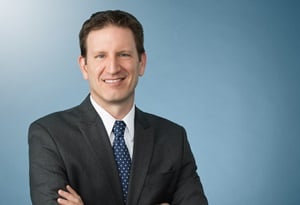Supreme Court Blocks OSHA Vaccination-or-Test Mandate and Upholds CMS Rule Mandating Vaccines – Now What?
On January 13, 2022, the U.S. Supreme Court issued two significant opinions:
- In Nat’l Fed. of Independent Business v. Occupational Safety and Health Administration, the Supreme Court stayed enforcement of the Occupational Safety and Health Administration’s (OSHA) emergency temporary standard (ETS) related to COVID-19 prevention measures, holding that the groups and businesses challenging the standard were likely to succeed in showing that the ETS requirements exceeded OSHA’s statutory authority.
- In Biden v. Missouri, the Supreme Court lifted the stay of the Centers for Medicare and Medicaid Services Interim Final Rule (the CMS Rule) for health facilities that receive Medicare or Medicaid reimbursement, holding that the Secretary had statutory authority to issue the mandate.
OSHA ETS on Hold, and Is Not Likely To Again Be Effective
We previously addressed the substance of the ETS and the effect of the Sixth Circuit Court of Appeals decision lifting a stay on enforcement of the ETS on December 17, 2021. In a 6 to 3 per curiam opinion issued January 13, 2022, with Justices Breyer, Sotomayor and Kagan dissenting, the U.S. Supreme Court blocked enforcement of OSHA's vaccination-or-testing/face covering ETS that generally ordered private employers with 100 or more employees that are not covered by another, stricter standard to require either employee COVID-19 vaccination or weekly testing and use of face coverings. In doing so, the Court concluded that the states, businesses and nonprofit organizations challenging the standard were likely to prevail in showing that the ETS requirements exceeded OSHA’s statutory authority.
In reaching this decision, the Supreme Court not only stayed any enforcement of the ETS, it explicitly stated that the ETS will continue to be stayed “pending disposition of the applicants’ petitions for review in the United States Court of Appeals for the Sixth Circuit and disposition of the applicants’ petitions for writs of certiorari, if such writs are timely sought.” (Emphasis added.) The order goes on to state: “Should the petitions for writs of certiorari be denied, this order shall terminate automatically. In the event the petitions for writs of certiorari are granted, the order shall terminate upon the sending down of the judgment of this Court.” This means the Supreme Court has effectively blocked the ETS not just until completion of the Sixth Circuit proceedings — which may continue now that the emergency relief phase of the litigation has been completed — but also until the Supreme Court completes any further review of any Sixth Circuit ruling, on a timeline established by the Supreme Court, which could be lengthy.
In addition, the Supreme Court’s opinion is not based simply on a conclusion that it was likely the petitioners challenging the ETS could establish OSHA exceeded the limits on its emergency authority; rather, the Court held that it was likely OSHA exceeded the limits of its statutory authority. OSHA, the Court held, has the power to regulate occupational dangers, but Congress has not tasked OSHA with regulating public health generally. According to the Court, “[p]ermitting OSHA to regulate the hazards of daily life — simply because most Americans have jobs and face those same risks while on the clock — would significantly expand OSHA’s regulatory authority without clear congressional authorization.” Absent that clear authorization, OSHA had no power to impose a rule of such “vast economic and political significance.” The language in the Court’s opinion seems to be a clear signal that the Court would ultimately rule that OSHA has overreached in requiring employee vaccination or testing and face covering by all private employers with 100 or more employers who are not covered by another enforceable standard — such as the CMS Rule.
OSHA has responded to the Supreme Court’s decision, expressing disappointment and continuing to urge all employers to require workers to get vaccinated or tested weekly: “Regardless of the ultimate outcome of these proceedings,” the agency responded in a statement, “OSHA will do everything in its existing authority to hold businesses accountable for protecting workers, including under the Covid-19 National Emphasis Program and General Duty Clause.” It remains to be seen what additional actions OSHA may decide to take in light of the Supreme Court’s decision, including after the comment period for the proposal for a permanent standard, which has been based on the ETS, expires on January 19, 2022.
CMS Rule Now Enforceable
In a separate decision, the Supreme Court, in a per curiam opinion joined by five Justices, lifted an enforcement injunction in 25 states of the CMS Rule, allowing the vaccine mandate for health care staff included in the rule to take effect and be enforced nationwide. The CMS Rule applies to many types of health facilities, such as hospitals and nursing homes. As a result of the Court’s ruling, all employers covered by the CMS Rule must comply with the requirements under the current guidance, including:
- By January 27, 2022, covered health care providers must demonstrate the following to be deemed in compliance with the CMS Rule: (1) policies and procedures for ensuring all facility staff are vaccinated or have received an exemption have been implemented, and (2) 100% of staff have received at least one dose of the COVID-19 vaccine, or have a pending request for, or have been granted, an exemption, or have been identified as needing a temporary delay in receipt of vaccine (a delay may be necessary if a staff member has recently had COVID-19 or for other medical reasons). Note that if a covered provider does not meet the above criteria but can show that 80% of its staff are vaccinated or received an acceptable exemption/delay and the provider has a plan in place to achieve a 100% vaccination rate by March 28, 2022, then the provider will not be subject to additional enforcement actions.
- By February 28, 2022, covered health care providers must demonstrate: (1) policies and procedures for ensuring all facility staff are vaccinated or have received an exemption have been implemented, and (2) 100% of staff have received the necessary doses to complete the vaccine series (one dose of a single dose vaccine, all doses of multiple dose vaccine) or have been granted an exemption or identified as needing a temporary delay prior to receipt of the vaccine. If, as of this date, a provider does not meet the above criteria but can show that more than 90% of its staff are vaccinated or received an exemption or notice of delay and there is a plan to achieve a 100% vaccination rate by March 28, 2022, then the provider will not be subject to additional enforcement actions.
Federal Contractor Rule Remains on Hold
Executive Order 14042 (EO 14042), which set forth vaccination requirements for employees of covered federal contractors, masking and physical distancing requirements in workplaces of covered contractors, and a requirement to designate someone responsible for coordinating and implementing COVID-19 workplace safety efforts, remains on hold based on multiple federal court injunctions halting enforcement. These courts determined that the plaintiffs are likely to succeed in their claims, including that President Biden exceeded the authorization given to him by Congress through the Federal Property and Administrative Services Act (FPASA) when issuing EO 14042.
There continue to be multiple appeals pending regarding the enforcement of EO 14042, including:
- Georgia v. Biden – enjoined enforcement nationwide and has been appealed to the Eleventh Circuit. The Eleventh Circuit declined to stay the nationwide order finding that the government had not shown that it would suffer irreparable injury during the appeal over the injunction and set a briefing schedule on the merits.
- Kentucky v. Biden – enjoined the enforcement of EO 14042 in Kentucky, Ohio and Tennessee and has been appealed to the Sixth Circuit. The Sixth Circuit also denied the federal government’s request to stay the district court’s order enjoining the enforcement of EO 14042 determining that FPASA “likely confers no authority upon the President to order the imposition of the contractor mandate.”
- Florida v. Nelson – enjoined the enforcement of EO 14042 in Florida and has been appealed to the Eleventh Circuit.
- Louisiana v. Biden – enjoined the enforcement of EO 14042 in Louisiana, Indiana and Mississippi and has been appealed to the Fifth Circuit.
In addition, the district court in Missouri v. Biden enjoined enforcement of EO 14042 in 10 states (Missouri, Nebraska, Alaska, Arkansas, Iowa, Montana, New Hampshire, North Dakota, South Dakota and Wyoming), but the federal government has not yet appealed this decision.
The Supreme Court will likely decide one or more of these cases, with the outcome of any appeal uncertain. Based on the Court’s decisions yesterday, it is very possible the Court may ultimately view EO 14042 as more analogous to the OSHA ETS than the CMS Rule and conclude that President Biden exceeded his authority in issuing EO 14042, but it is also possible the Supreme Court could view the scope of authority granted to President Biden under the FPASA as similar to the authority it upheld in the CMS Rule case.
State Workplace Safety Standards Remain Enforceable (Subject to Challenge) But Are Changing Rapidly
The 22 states that administer their own occupational health and safety programs applicable to private employers that, under agreements with OSHA, must be as effective as federal OSHA standards had taken various positions regarding the adoption or implementation of the ETS as a state standard. One state, Minnesota, had adopted the federal ETS in its entirety as of January 10, 2022. Other state-plan states had not yet acted, awaiting the January 24, 2022 deadline to do so and likely hoping for the Supreme Court to rule before that date (as it did).
Minnesota — the state that adopted the ETS as the state standard — and other states that indicated an intent do so are already following suit and suspending implementation of those requirements. Of course, any state standards enacted prior to or independently from the ETS, such as California OSHA’s emergency temporary standards on COVID-19 infection prevention, will remain in place.
The Effect on Employer Policies
Notwithstanding the stay on OSHA ETS enforcement, and the likelihood that it will not become enforceable, many employers have effectively adopted mandatory vaccination or vaccination-or-testing policies and programs. These policies may still be very defensible, subject to reasonable accommodation obligations required by applicable law, although employers may wish to review their documentation to ensure that they are prepared to defend those practices and determinations as based on undue hardship and/or direct threats to health and safety that could not be effectively mitigated by less extensive requirements, in order to comply with Title VII and Americans with Disabilities Act requirements. Without the ETS to preempt state law, employers will need to review applicable state and local laws to ensure that any mandatory vaccination policy provides exemptions required by law, some of which go beyond accommodations for religious and medical reasons. In addition, policies that require non-vaccinated employees to submit periodic COVID-19 test results with testing done on their own time and at their own expense are subject to greater challenge, including under applicable state or local laws, where the testing is a matter of employer policy rather than a federal or state mandate. Employers should also review for any state or local mandates or restrictions on vaccination, testing, face covering and vaccination status disclosure requirements now that the federal OSHA ETS supporting such requirements is no longer in effect.
Other employers who adopted vaccination-or-testing policies as of or since January 10, 2022 solely because the OSHA ETS required such adoption may decide to withdraw those policies. In doing so, employers will need to determine how best to communicate to employees regarding the change in policy, recognizing some employees may welcome the reversal while other employees may object if unvaccinated workers are not being required to be tested weekly and wear face coverings in the workplace. To the extent employers have already collected vaccination records to comply with the ETS, employers may want to retain such confidential records as the Centers for Disease Control and Prevention’s (CDC) recommendations for close contacts to quarantine, get tested and wear a face covering after an exposure to COVID-19 vary depending on vaccination (and booster) status.
The material contained in this communication is informational, general in nature and does not constitute legal advice. The material contained in this communication should not be relied upon or used without consulting a lawyer to consider your specific circumstances. This communication was published on the date specified and may not include any changes in the topics, laws, rules or regulations covered. Receipt of this communication does not establish an attorney-client relationship. In some jurisdictions, this communication may be considered attorney advertising.






